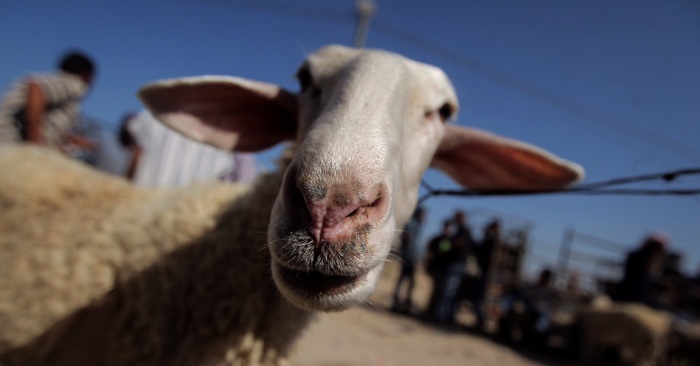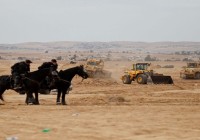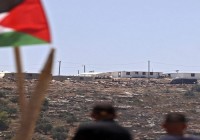Sacrificial Sheep: Drop in Expected Demand by a Third
As Eid Al-Adha draws closer, Palestinian rich families are preparing to buy sacrificial sheep for the feast, at a time when the market is witnessing a gap in the supply and demand for meat. Is there really a shortage? And what is the volume of this shortage?

Written by: Hasnaa Al Rantisy Translated by: Hakim Odeh
Mohammed Dawabsheh, a 35-year-old sheep breeder from Doma Village, near Nablus City, says that for the time being he is fattening around 300 sheep in order to sell them, even though he used to breed a much larger number during the past years.
Due to the high cost of fattening sheep, resulting from the high prices of fodder, water and vaccines, he was obliged to purchase and sell sheep within frequent intervals, in order to avoid losses.
Mo'ayyed Ibrahim, a 43-year-old sheep breeder from Ramallah, says that he is currently breeding around 120 sheep to sell them during the Eid, whereas in the past, he used to breed between 200-300 sheep. This year, however, he was afraid of losing demand on his sheep due to the great number of imported sheep into the market. Consequently, he was obliged to reduce the number of his bred sheep.
Reasons for the Decline in Demand on Livestock
According to Eng. Mohammed Fatafta, the Director of Guidance and Livestock Department at the Ministry of Agriculture, the gap between supply and demand can be attributed to the following: the decline in livestock productivity, the outbreak of certain diseases that have led to the death of young livestock, and the drop in the number of livestock available.
Moreover, other reasons for the decline include: the merchants’ inability to provide the demanded quota of livestock; the increase in selling sheep to Israel; the sale and slaughter of mothers, due to the rising prices of meat; the large numbers of slaughtered sheep during the wedding season; and the similarity among calf and lamb meat prices, leading customers to choose lamb over calf meat since there is not a major difference between their prices.
In addition to that, many farmers are reluctant to fatten their sheep due to the lack of births among them, the high prices of weaned lambs, the high fattening costs and their effect on profitability, and the greed of some traders when they sell the meat. This caused a clear disparity in the prices of meat sold to customers from one district to another.
Market Need
On behalf of the Ministry of Agriculture, Eng. Fatafta revealed the numbers of livestock needed for sacrifice in the Palestinian market, as follows:
Type Market Need Available Number Covered Percentage
Cow 10,930 6,918 63%
Sheep 187,740 133,210 71%
Fatafta attributes the gap between the supply and demand to the seasonal livestock productivity. He explains that there is always a fluctuation in the number of sheep available in the Palestinian Market, with a noticeable increase during summer due to social and religious occasions.
The mating season among sheep takes place in May and June, while births occur in October and November.
Usually, farmers start fattening the sheep two months after their birth, in a process that lasts for a period between 4-6 months.
During the last few months, the demand for meat has significantly risen, leading to a great increase in its prices, and a gap in the supply and demand of meat in the market.


